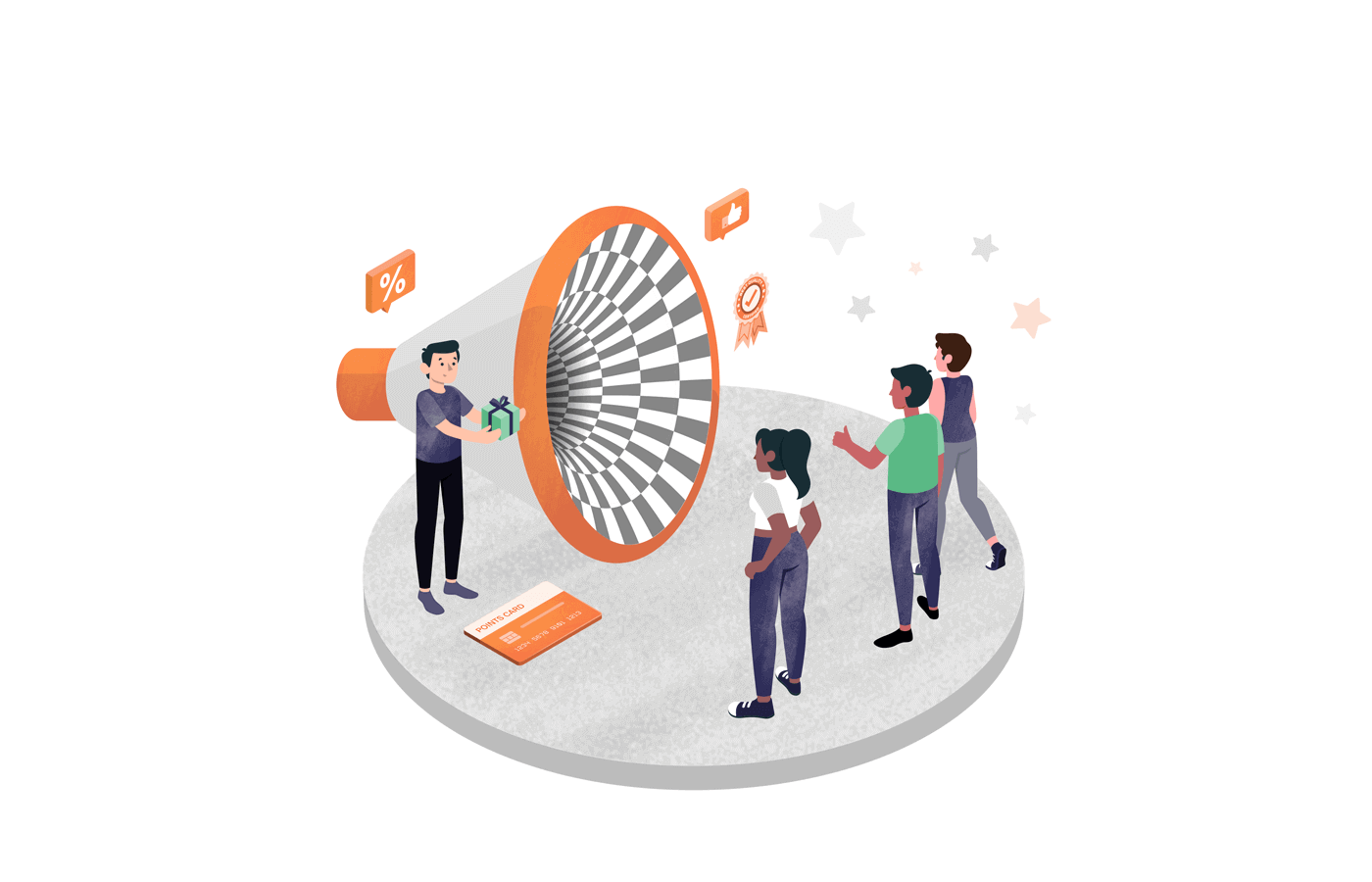Companies that extract value as a conscious strategy know who they are.
Such B2B or B2C brands are not venerable to customer retaliation. Instead, these businesses know where they’re headed and view customers’ loyalty or disloyalty as opportunities to gain a competitive advantage.
For context—and intuitive insights to extract value as a conscious strategy—let’s discuss everything there is to know about customer loyalty, schemes to get you started, and practical examples to keep you moving. If you’re ready, let’s begin!
What is Customer Loyalty?
Customer loyalty is a customer’s intention to continue doing business with a company, increase their spending, or say good things about it.
Forward-looking ecommerce leaders, small businesses, and fortune 500 companies use customer loyalty programs to build a strong, positive, and emotional connection between their consumers, product, and brand.
Why is Customer Loyalty Important?
Customer loyalty is important because it removes the hassle of placing your product in front of the right audience — reducing your marketing budget, and helping you focus more on creating strategies that drive value.
For ecommerce leaders cutting corners in the service department, here are some of the perks you are missing out on;
- Increased share-of-wallet
Consider the amount of money a repeat customer spends on a brand’s service or product compared to how much is spent on the competition. Increased share of wallet from loyal customers is among the many importance of customer loyalty extravagantly rewarding retail leaders and software business owners.
- Ease word-to-mouth referrals
Customers like to talk about their loyalty to a brand—highlighting why they respect it and what makes them unique. You won’t find a better way for your brand to enjoy the power of dark social than word-of-mouth marketing.
- Increased trust leading to profitability
As long as customers trust and respect your brand, they wouldn’t doubt your products’ value, even when there is a change in pricing or market trends. That means loyal customers guarantee long-term profits.
Also read: What is Brand Loyalty? (Definition, Types, Examples)
What Types of Loyalty Programs are Popular?
Loyalty programs highlight the need to give customers a reason to keep doing business with you. But, maybe through incentives or some substantial benefits, competitors might find it intimidating.
Six Most Popular Loyalty Programs
- Point-based loyalty program: allow customers to earn points that can translate into rewards when specific requirements are met.
- Paid {VIP} loyalty program: charge customers a fee for specific privileges that would otherwise cost them double.
- Coalition loyalty program: partnering with other brands in mutually beneficial deals for your company and customers.
- Value-based loyalty programs: targeting and offering solutions to your customers’ specific pain points and desires.
- Tiered loyalty program: a loyalty ladder that rewards customers as they move up the buying/product chain.
- Game-based loyalty program: create exciting and engaging content to boost awareness and attract customers to the services and products you offer.
What are the Must-haves in Every Loyalty Program?
Research shows that exceeding customers’ expectations during service interactions— by offering a refund, a free product, or a free service—makes customers marginally more loyal than simply meeting their needs.
Below are a few must-haves if you want your customer loyalty program to grow your business faster than your sales and marketing teams.
- Keeping it simple to stupor
- Easy to join
- Relevant discount offers
- Engaging ideas
- Packages packed with surprises
Also, there are six district categories of customers:
- Happy customer
- Price-loyal
- Loyalty program loyaL
- Convenience loyal
- Loyal to freebies
- Genuinely loyal
Identify the category—or set of customers— you want to appeal to with your loyalty program and make it intuitive to their needs.
Benefits of Strong Customer Loyalty
Like everything in life, strong customer loyalty comes with its perks. However, you must weather the storm of providing genuinely great services to enjoy the benefits of customer loyalty.
It Makes Customers Develop Immunity to Your Pricing
Price setting is very delicate, especially in industries or markets regulated by trends and expertise.
For instance, the growth of most SaaS startup companies depends on how well they can balance products with pricing. Because if pricing is not in line with the value offered, customers opt-out.
Customer loyalty can help create an immunity to your pricing. Most loyal customers don’t care about the price as much as the services offered—though we don’t advise you to overstretch your pricelist.
Fosters Accurate Sales Forecast
Loyal customers are repeat buyers. So having a community of loyal customers keeps your sales team in the know.
They know what to expect in sales and what not to expect, giving you an accurate forecast of expected monthly or quarterly income.
For brands just starting, having a reasonable estimate of expected cash flow reduces risks and helps them make the suitable investment. While for established brands, accurate sales forecast makes the management process more efficient and effective.
Create Brand Ambassadors
While you must treat every customer patronizing your brand with utmost respect and integrity, we can all agree that not all customers are equal.
Imagine turning an influencer in your industry into a loyal customer. The opportunity is limitless, right?
Strong customer loyalty programs attract brands ambassadors—folks willing to go the extra mile to recommend you and your product to their tribe—and that’s something you can’t buy.
How to Build Customer Loyalty
Delighting customers doesn’t build loyalty; reducing their effort—the work they must do to get their problem solved—does.
Seven simple tips to make customers loyal to your brand:
- Help customers solve their problems quickly and easily.
- Build and manage an interactive support customer community.
- Be genuinely generous with your offerings.
- Stay transparent, honest, and open with communication.
- Don’t work with a one-size-fits-all loyalty program; create multiple category-based loyalty programs.
- Stay on top of the trend and allow your branding, culture, marketing, and services to evolve with time.
- Offer perks so good that customers would think it would be foolish not to become a member.
- Handwritten thank-you notes and messages of gratitude can make your brand a topic of discussion among coworkers.
Customer Loyalty and Retention Strategies
All customers want is a simple, quick solution to their problem. So build your strategies around solving their needs instead of touting the benefits of your product.
Three Highly Effective Customer Loyalty Retention Strategies
Reduce the Need for Repeat Calls
Don’t just resolve the current issue—tackle the next one.
Customers gauge the effort they expend in terms of how an individual call is handled and how the company manages evolving service events.
Ecommerce leaders must train their reps to resolve the customer’s primary issue and anticipate and address common downstream effects.
Address the Emotional Side of Customer Interactions
Customers hate it when reps hide behind general company policies. If you want loyalty, you must treat consumers like humans with needs.
Highlight words that tend to trigger adverse reactions and drive repeat calls—words like “can’t,” “won’t,” and “don’t”—and coach your reps on alternate phrasing.
Teach call reps to listen for clues to a customer’s personality type, and tailor their responses accordingly, offering the customer the balance of detail and speed appropriate for the personality type diagnosed.
Elicit and Use Feedback from Disgruntled or Struggling Customers
Hire frontline reps specifically trained to call customers who have given it low marks. The reps focus first on resolving the customers’ issues, but they also conduct surveys and collect feedback informing service improvements.
However, you don’t have to limit it to just phone calls—Monitor online behavior to identify struggling customers.
Also read: How To Ask For Customer Feedback
Minimizing channel switching by increasing self-service channel “stickiness” and empowering your front line to deliver a low-effort experience are two highly sought-after customer retention strategies we didn’t highlight yet, we recommend you keep them in mind.
How to Measure Customer Loyalty
Measuring your customer loyalty isn’t just as simple as whether your customers leave or stay. The loyalty pie consists mainly of slices such as product quality and brand; the slice for service is relatively small. But service accounts for most of the disloyalty pie.
To accurately measure customer loyalty, brands need to know the customer intent behind repeat transactions, where and how often purchases occur when it stops, and customers’ satisfaction after every transaction.
Top 5 Metrics to Measure Customer Loyalty
- Retention rate and lifetime value
Retention rate and lifetime value measure how long a customer does business with you and the value they’ve had over time.
A practical and well-thought-out loyalty program ensures your customer retention rate increases. Keeping an eye on engagement statistics alongside loyalty metrics will help you determine retention rates.
- Churn rate:
The percentage of customers who cancel your product or service, don’t renew their subscription, and end up leaving your company makes up the churn rate metrics.
Negative churn is the opposite of this. Negative churn shows the percentage of customers who don’t leave; instead, they upgrade their packages or subscriptions or purchase additional services. Stay on top of your churn analytics.
- Net Promoter Score (NPS) and Effort score {CES}
NPS measures the degree of recommendation your company attracts from loyal customers. Obtain NPS by subtracting the percentage of people who won’t recommend you from those who would.
If you are more concerned about driving or regulating the effort customers have to put in to enjoy your service, we recommend you prioritize measuring Effort Score {CES} over NPS. This is because CES measures actual customer experience rather than emotional delight.
- Purchase Habit
Purchase habit helps companies know if their customers are loyal to them or would quickly leave if the competition throws a slightly better offer their way. So, if you want to know how long it takes for customers to repeat business, how many of these business transactions remain successful, and influence satisfaction, then it’s best you start tracking repurchasing levels.
- Brand engagement
Measure customer loyalty by taking a look at your brand engagement. And we are not just talking about search engines.
Track referral traffic to know what your customers are saying on social media; monitor their online relationship; how they interact with your web pages, brand mentions, and review sites. A detailed overview of brand engagement and the other loyalty metrics gives you a clearer picture.
Also read: Customer Retention & Loyalty Measurement Guide
Example of Customer Loyalty Programs
Customer satisfaction begets loyalty, and loyalty begets profits. Below are a few examples of loyalty programs—from top brands—attracting overall customer satisfaction.
Foxtrot
The perks of being a Foxtrot customer.
Foxtrot runs a point-based loyalty program where customers can earn perks by shopping online, in the app, or from the store. Key criteria: spend $100 a month and enjoy free rewards for the rest of the month and the next.
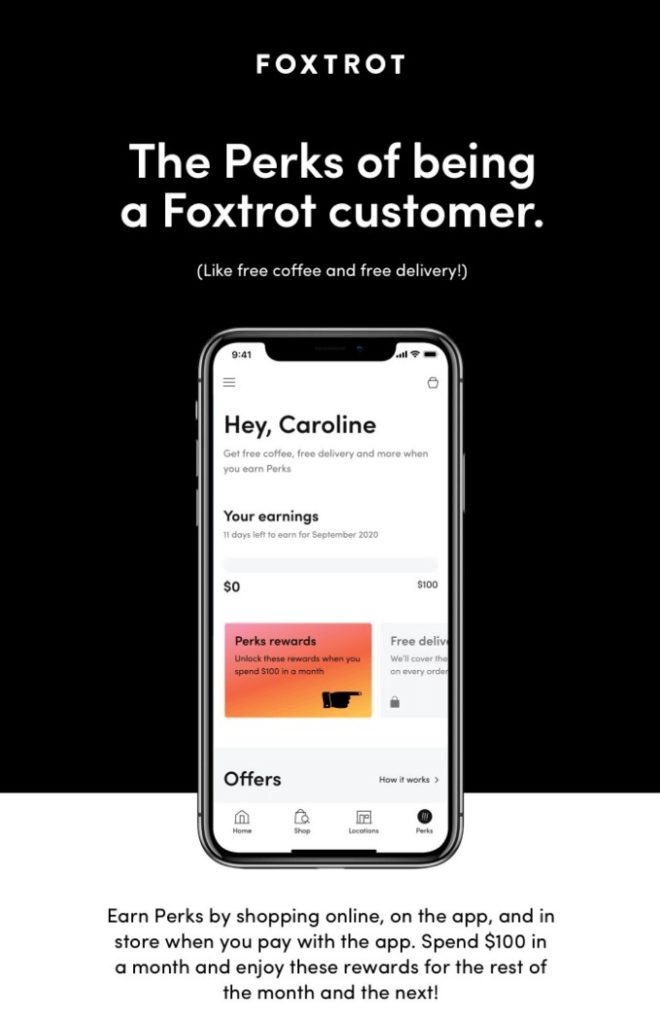
Source: Original Foxtrot email
Enjoy three months of google one with us – on us.
Google offers a paid loyalty program for premium YouTube users. The loyalty program allows premium members access to 100GB of cloud storage, phone backup, Google experts’ support, and numerous other benefits you can share with family.
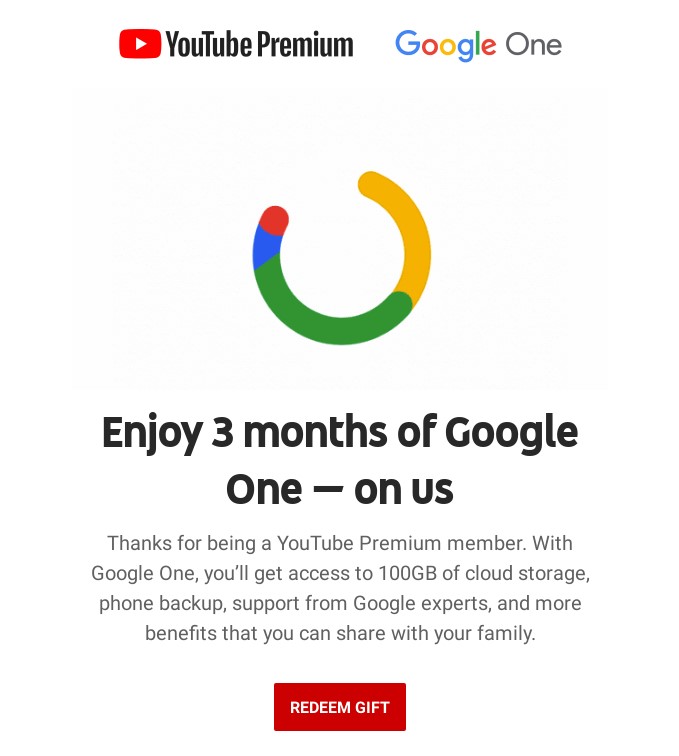
Source: Original Google email
Zoe’s Kitchen
Just for you: free hummus to say hello!
In its point-based loyalty program, Zoe’s kitchen adopts the “show don’t tell” approach. Customers can enjoy a free classic hummus and pita by adding the Hummus ZK reward to their online restaurant or dine in order, then collect their reward by scanning from the ‘my reward’ section in the Zoes app.
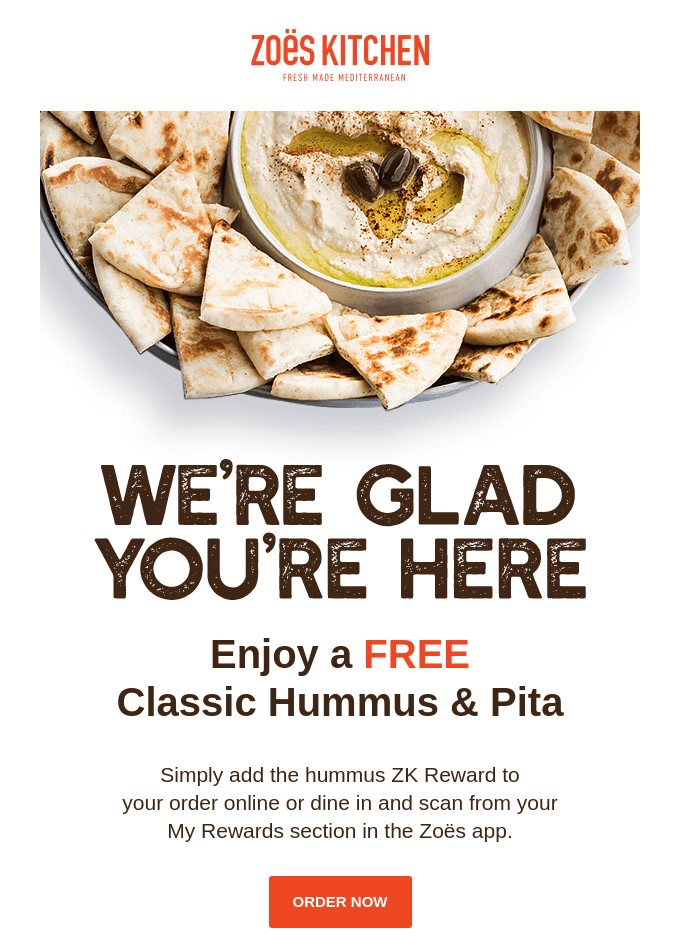
Source: Original Zoe’s Kitchen email
If you are looking for a user-friendly email marketing service to send out visually stunning newsletters that are not only easy to design using a smooth-as-butter drag and drop email editor-cum-builder, but also something that will not cost an arm and a leg to keep using, you are in the right place!
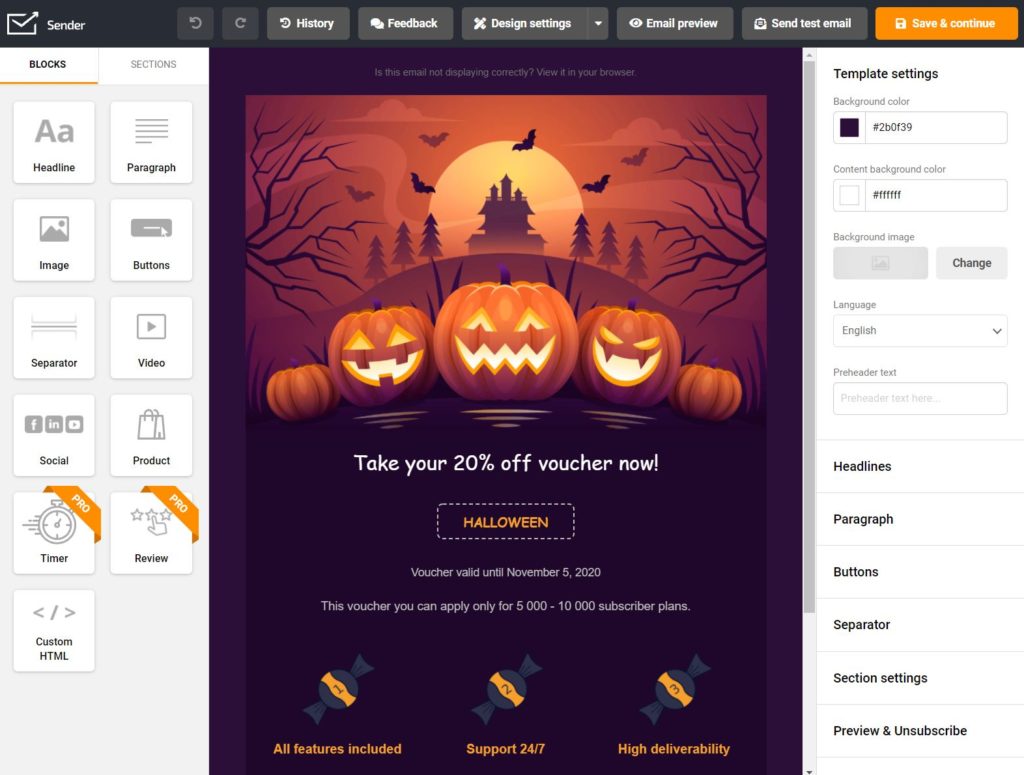
Take Sender for a spin before shifting over from your existing email tool or start with zero financial commitment. FREE Forever allows users to send up to 15,000 monthly emails absolutely free of cost!
Outclass Competition in Customer Loyalty Matter
The definition of customer loyalty revolves around a customer’s intention to continue doing business with a company, increase their spending, or say good things about it.
The easiest way to retain customer loyalty is by offering great products backed by excellent support service. However, since product satisfaction and customer support are not duly under your control, you can retain customer loyalty by offering loyalty programs packed with many benefits.
Content Contributor – Tobi Cyprain
